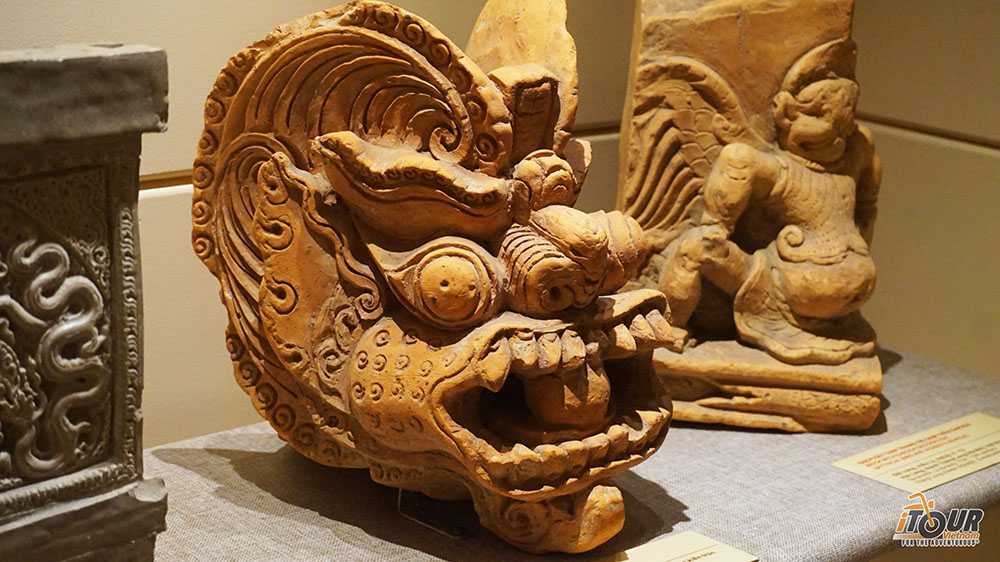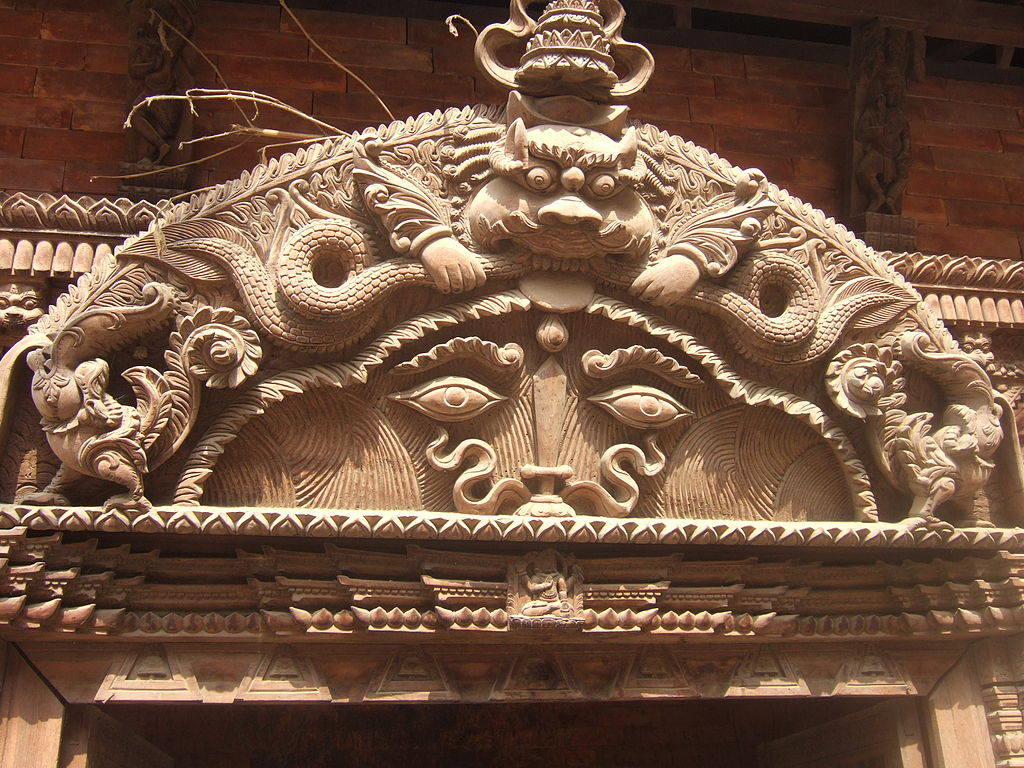 |
| Makara, mystical animal hutterstock.com |
Among all the legendary creatures in Hindu and Buddhist traditions, nothing appears more frequent and appealing in the temples than, a weird looking creature known as Makara. Akin to a dragon, makara is depicted as a sort of crocodile, blended with distinctive features of other animals of both terrestrial and aquatic types.
 |
| portrayal of makara over a time. dharmawheel.ne |
In the Hindu mythology the Makara, is a mysterious sea-creature depicted as half-fish and half-animal; but the depictions may vary from temples to temples. A vahana of Varuna, demi Hindu god of wind and sky and also of Ganga, the deity associated with the Ganges River. More often it is a hybrid creature neither this or that and in Indian astrology you can relate it to the sign of Capricorn, one of twelve Zodiac symbols. The most commonly recurring creature in Hindu and Buddhist temple iconography, it also frequently appears as a gargoyle or as a spout attached to a natural spring.
The Makara is depicted with another symbolic animal, usually a lion, a serpent, or a naga (snake) emerging from its gaping mouth or getting swallowed by the creature in countless Hindu temple of south India, especially in Tamil Nadu.
In the temples of countries like Nepal, Sri Lanka, Thailand, Indonesia, cambodia and others Makara serves as a loyal and fierce protector safeguarding the place of divinity. In countries like India he is looked upon as the guardian against black magic and negativity.
In the Hindu or Buddhist temples generally depicted as half terrestrial animal in the frontal part (stag, deer, or elephant) and half aquatic animal in the hind part (usually of a fish, a seal, or a snake, though sometimes a peacock or even a floral tail) the terminology of Makara has been a subject of debate among scholars of Indology. The crux of the matter is Makara is depicted in various forms throughout Hindu culture, however, in the modern world, its form is always more closely related to the marsh crocodile or water monitor
The lack of cultural paradigm consensus among the researchers has led to so many definitions of makara. That makara, a chimeric creature, does not have a standard terminology is an accepted fact. However, the meaning of old Indian makara was crocodile and it is in agreement with some facts related to Indian languages, particularly the ones spoken in the north.
The word Makara has exactly the same meaning: Makar in Bengali and Nepalese; Magar in Hindi, Gujarati, Marathi, Sindhi; Magarmatsh (magara-matsya, i.e., 'wagara-fish') in Punjabi, Kashmiri; As for the Dravidian languages like Telugu and Kannada, crocodile is known as negadu ' or Kurukh magari '(alligator) and negar respectively. Magar or makar is unknown in Tamil.(see, e.g., Thumb and Hauschild 1953: 280) and the Santall mangar 'crocodile' (Turner 1966).
If you go back to the earliest civilization the crocodile-gharial, usually with a fish in its mouth, is depicted in an array of sacred animals on the seals and amulets but its most traditional Indian variant is not present in the art of the ancient cities of the Indus Valley now in Pakistan.
Composite beast with a human face, the trunk of an elephant, the horns and fore-parts of a bull, and the tail and hind parts of a tiger associated with makara like strange creatures need to be further researched.
Makara first appears in the Puranas and Brähmanas (Böhtlingk and Roth 1855-75). In the monuments of later civilization it has composite features - parts of the bodies of various animals.
In Pali and Prakrit, makara, or magara, or mayara is referred to the 'sea animal', 'sea monster', 'crocodile', 'shark', 'dolphin' (Böhtlingk and Roth 1855-75).
The concept and depictions of makara left a lasting impressions in many south and southeastern countries through the spread of Hinduism and in particular Buddhism and is widely seen in many Hindu-Buddhist monuments. Makara is also a part of ceremonial paraphernalia in these countries and even today it stays this way.
In modern China- Makara from Northern Qi Dynasty (CE 550-577), China Cham god Nāga emerging from mouth of Makara at the National Museum of Vietnamese History. A fragment of a tower designed with Naga, the Cham god snake.
In the 18-century Buddhist Tibet, the bronze Makarasa is a unique depiction with pointed jaws of a crocodile, fish scales, the tail of a peacock, an elephant trunk, boar tusks, and the eyes of a monkey. However, not all Makara depictions resemble crocodiles
In Sri Lanka, the Makara resembles a dragon more than a crocodile. In Thailand makara, part elephant and part crocodile is the protector of places of worship and a symbol of fertility.
As for the Indian mythological animal makara, researchers have traced their origin to one of the real animals crocodile and dolphin,
ooo
Depiction of makaras in other countries:
 |
| Makara, Vietnam, Alamy.com |
 |
| Mythological dragon -Makara, Vietnam itourvn.com/blog |
 |
| Thailand, Makara. travool.life |
 |
| Thailand-makara with naga. en.wikipedia.org |
Above image: Makara with Nagas, Wat Suthat, Bangkok, Thailand
 |
| Vietnam naga from the mouth of makara en.wikipedia.org |
Above image: Cham god Nāga emerging from mouth of Makara at the National Museum of Vietnamese History.........
 |
| Sri lanka, Anuradhapura. A dragon similar to makaraen.wikipedia.org |
 |
| Makara sculptures, Indonesia. en.wikipedia.org |
 |
| Nepal makara, Kathmandu. en.wikipedia.org |
Above image: Nepal: Makara and Kirtimukha at Hindu temple in Kathmandu.
 |
| Makara from Northern Qi Dynasty (CE 550-577),n.wikipedia.org |
Above image: In modern China - Makara from Northern Qi Dynasty (CE 550-577). Cham god Nāga emerging from mouth of Makara at the National Museum of Vietnamese History. A fragment of a tower designed with Naga, the Cham god snake.
oo
.webp) |
| Makara in Cambodia. worldhistory.org |
Above image: Cambodia: - A makara, the decorative sea-monster motif common in Hindu architecture, especially, as here, above doorways. Cambodia, 1st-7th century CE. (Musée Guimet, Paris)......
Tit-bits:
God varuna and Makara - Sangam period:
 |
| Hoysaleswara Temple, Karnataka. dreamstime.com |
Above image: Hoysaleswara Temple wall carved with sculpture of Makara mythical animal carrying lord Varuna -god of rain...........
 |
| God varuna, his vahana Makara. en.wikipedia.org |
In the later Hindu texts like the Puranas, Varuna is also a Dikpala or guardian of the western direction. He is a youthful man and travels on his vahana - Makara (crocodile) and holding a Pasha (noose, rope loop) and a pitcher in his hands. Makara-shaped earrings called Makarakundalas are sometimes worn by Hindu deities, for example Shiva, Vishnu, Surya, and Chandi. Makara is also the insignia of the love god Kamadeva who does not have a temple.
https://en.wikipedia.org/wiki/Varuna#:
https://symbolsage.com/makara-symbol-meaning/
https://www.semanticscholar.org/paper/The-meaning-of-the-term-makara-in-light-of-Semeka-Pankratov
https://www.dharmawheel.net/viewtopic.php?t=30000









